Nothing is more frustrating than biting into that ripe apple or pear and finding brown decay, or worse yet, finding the culprit - the codling moth worm! Or spending time shelling that walnut and finding no nut, just frass (nicely put, insect poop). Well luckily, there are organic solutions to getting rid of these pesky worms! In our video Codling moth—How to Keep the Worms Away Organically, Tricia shows all the different organic approaches to battling codling moths.

We would like to go into more detail about a naturally occurring virus, Cydia pomonella granulovirus (CpGV), also known as the codling moth granulosis virus. Found in fairly low concentrations in nature, the virus attacks and kills the larvae or caterpillars of the codling moth (Cydia pomoella), specifically. CYD-X is a concentrated suspension of the Cydia pomonella granulovirus available to commercial and home gardeners to control populations of codling moth larvae.
How It Works
The codling moth larva or worm must take in or ingest the CpGV to become infected. The cells of the codling moth larva are used to replicate many copies of the CpGV. The CpGV spreads to other organs of the larvae and within a few days, the infected larva stops feeding and eventually dies. The dead larva breaks down and releases billions of viruses that can in turn infect other feeding codling moth larvae. This is why the CpGV is extremely effective at low rates.
Host Specific

CpGV has a very specific target, the codling moth. Under artificial conditions in the lab, two other species of moth related to the codling moth were infected, however, neither are found in North America (see product literature for more details).
CpGV is not infectious to fish, wildlife, beneficial insects or humans!
Application Rates
Home Orchard - 1-1.5 teaspoons of the CYD-X concentrate per 5 gallons of water.
Commercial Orchard - general rule of thumb, 3 fl. oz CYD-X concentrate per 100 gallons. Lower rates can be used if codling moth populations are low or you plan to spray frequently. One strategy suggested by the manufacturer is to make your initial spray more concentrated (4-6 oz/100 gal), to start the viral outbreak in the worms and follow with reduced rates (1-3 oz./100 gal) to maintain the viral infection.
Timing of Application
Depending on the weather, the first flight of the adult moths which overwintered in cocoons, will begin from early March to early April. The female codling moth will lay eggs on leaves or near developing nuts. The eggs will hatch after 5-20 days (depending on temperature).

Codling moth caterpillars will seek out fruit or nuts right after hatching, usually within 1-2 days. If no fruit is readily available the worms will eat the leaves. So the timing of the spray is essential to effective infection by GpGV. The ideal time to spray is at egg hatch and when small caterpillars are wandering in search of fruit. Once they burrow into the fruit or nut, they are protected from sprays.
Commercial growers will put out pheromone lures with traps to monitor for adult codling moths and they will check them every couple of days. The first sign of an adult in the trap will determine the “Biofix”. This is an observable biological event that signals when to begin accumulating degree days. It is recommended that the first CYD-X application should be around 250 days after codling moth biofix (assuming the base temperature is 50°F). For more information on determining your degree days, visit the UC IPM website.

Home gardeners can also use traps and monitor the developing fruit for “stings” at least twice a week. The sting is the point where the caterpillar is entering the fruit. Remove the fruit with stings and spray asap. Weekly applications are advised, especially if you have a high codling moth population.
Getting the Most out of CYD-X
- For best results, refrigerate concentrate when not in use or store in a cool, dry place, out of direct sunlight.
- Mix in water that is at neutral pH (7.0), alkaline water (pH>9.0) will reduce bioactivity and stability of the GpGV.
- Apply as soon as possible after mixing
- Exposure to sunlight can reduce effectiveness of GpGV, spray in LATE afternoon or early evening.
Save your apples, pears or walnuts from pesky codling moth larvae today. There are many tools available to launch the attack on our foe, the codling moth, don't wait before it is too late!
Resources:
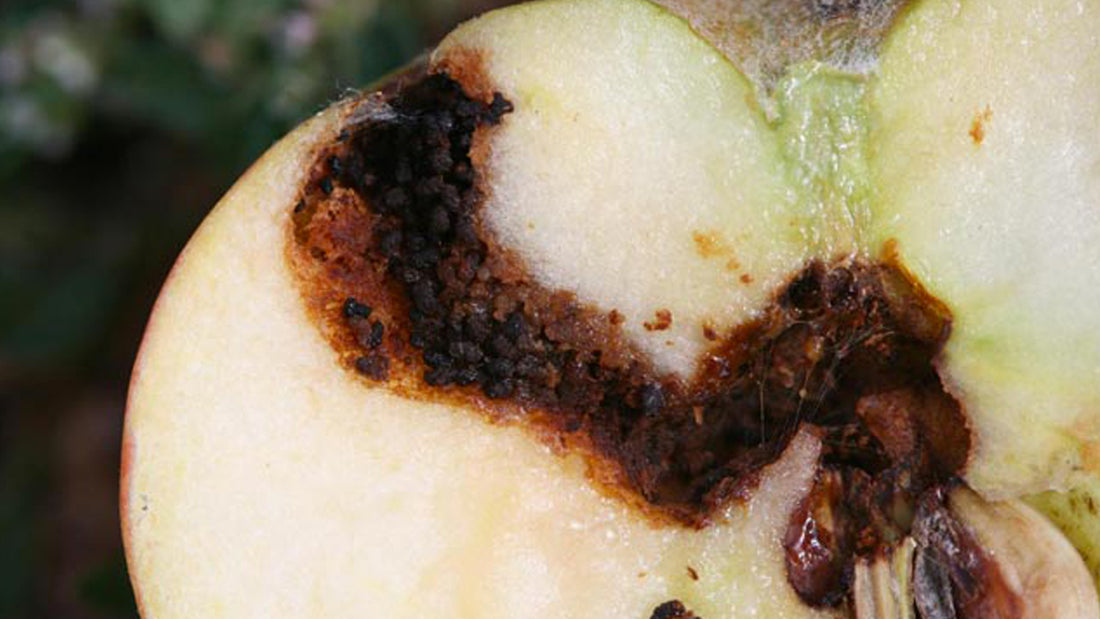
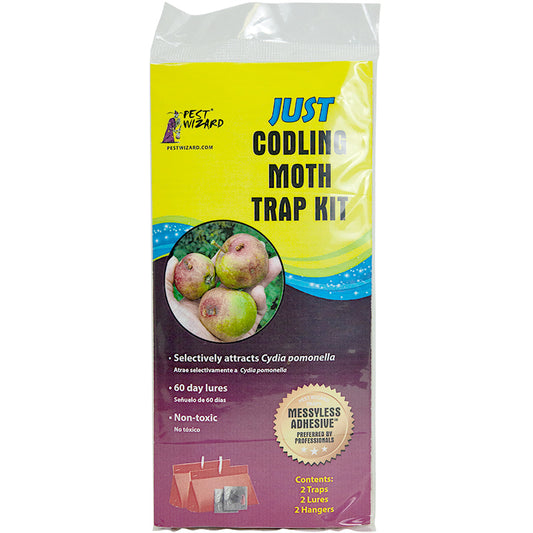
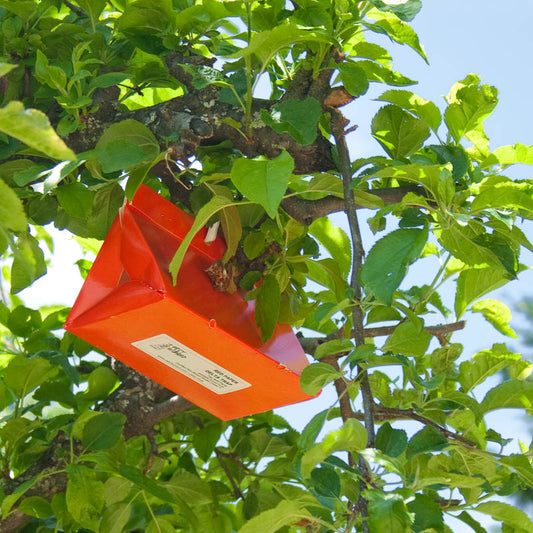
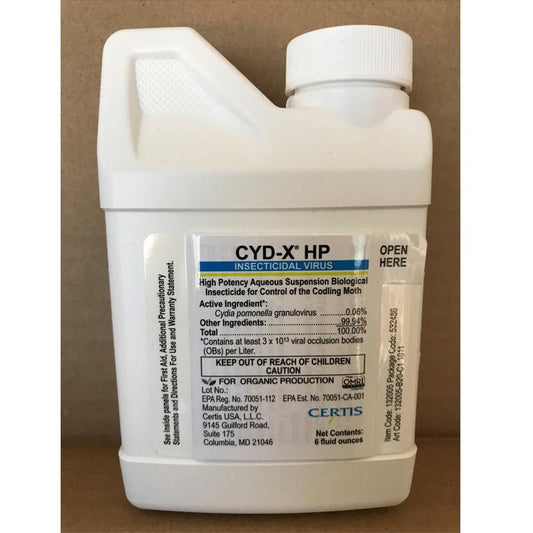
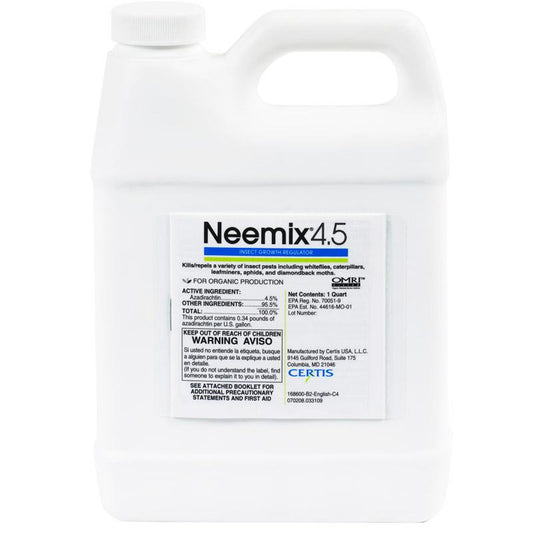
7 comments
It would be great if Peaceful Valley could give an evening or day time workshop on how to properly spray the virus solution. Then depending on who came to the class we could decide to all go out for coffee — or divide up a quart of something wink, wink.
How long does the virus remain viable if kept refrigerated? I have some I’ve had for several years. Is it still good? Does freezing it kill the virus?
Rosemary, we could not do what you are suggesting unless we went through the registration process with the California state agency. We would not be able to advertise for you either. I know it is a very expensive bottle and most home orchard keepers do not need that much every year. You might get together with other people in your neighborhood and go in together on the bottle. Then the cost is a little less painful.
Would it be legal for Peaceful Valley to take a quart of CYD-X and divide it into small containers for individual sale? Could a customer do it and leave contact information?
CYD-X in small amounts was expensive as it was, but it’s really cruel of the manufacturer to offer it only in large amounts. I froze mine, and maybe it will still work. Sure hope so because I know that it did work, since codling moth has all but disappeared from my two Grannies. Perhaps the manufacturer could reconsider. If it were better known to home orchard growers, they could sell a lot of it.